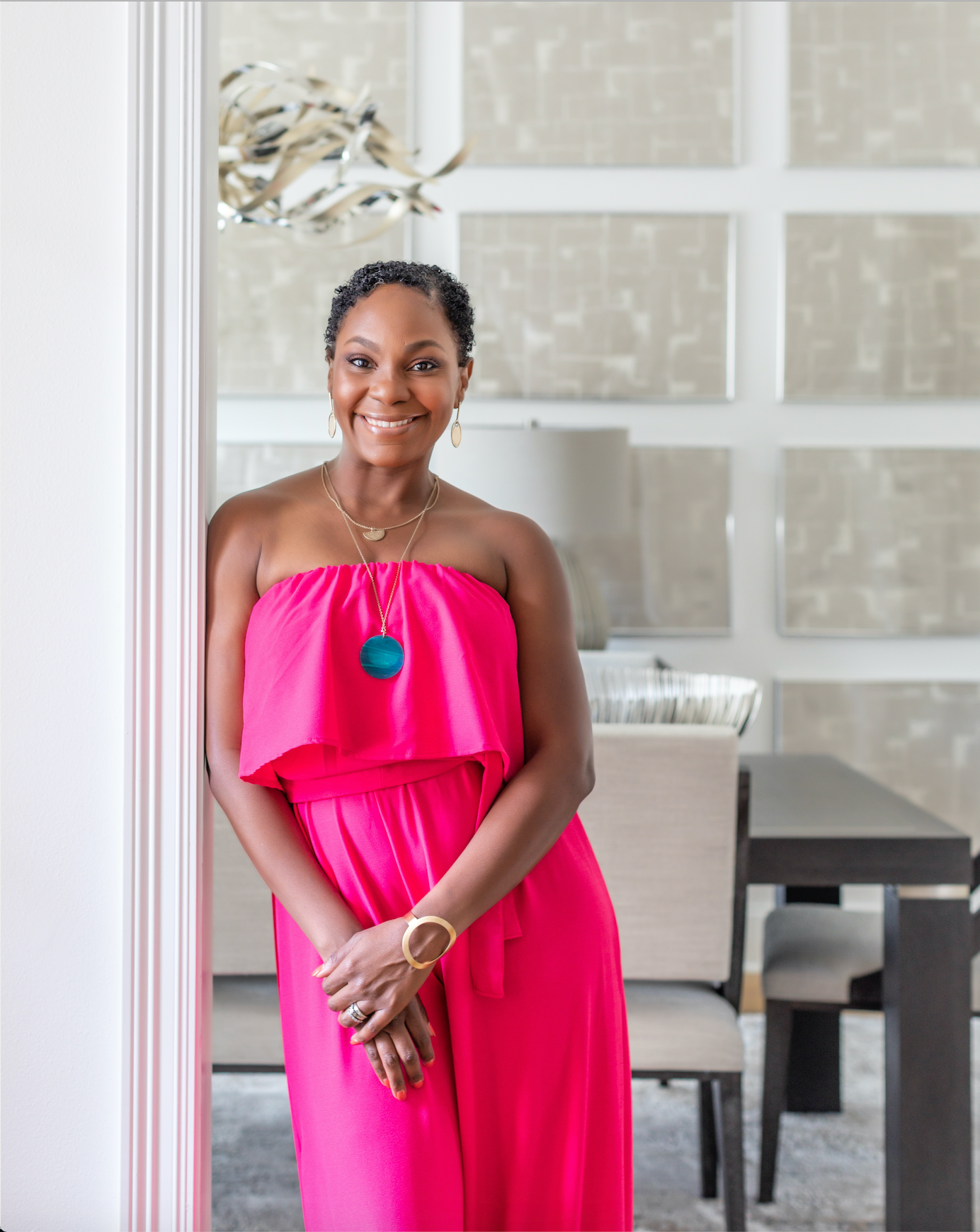The 50 States Project is a yearlong series of candid conversations with interior designers we admire, state by state. Today, we’re chatting with Arianne Bellizaire, a former marketing and crisis communications professional who launched her Baton Rouge, Louisiana–based design firm more than a decade ago. In addition to sharing images of her own home, which she renovated last year to use as a showroom for her clients, she talks about her unofficial role as a marriage counselor, refining her messaging to bolster her business, and the importance of selling clients on the little things first.
How are you doing these days? What kind of disruption have you seen, and how are you recalibrating?
We’re fine—we’re healthy, we’re happy, we’re home. It has definitely thrown us all off of our game mentally, though. When I left the office on Friday, March 13, I didn’t realize I was not going to go back for several weeks. Having an office—and working hard to grow my business so that I could have a separate dedicated studio—is great until you can’t actually go there for things like fabric samples and paint swatches. On the flip side, obviously no one would ever wish any of this financial hardship, uncertainty or health problems on anybody, but it does make you step back and [take stock]. I’ve realized there are some ways I was running my business that I didn’t need to be.
What do you mean?
I’ve been able to communicate with my clients via Zoom, phone and email, so business has not missed a beat. And we’ve onboarded three new clients in the last seven weeks. Yes, there was a moment [where everything was] up in the air, but we pivoted to see the opportunity to reevaluate our processes and find solutions. If we can’t leave the house for weeks on end, how do we onboard clients and make them feel like their project is moving forward?
We did a lot of work last year making our office virtual, because two of my staff members lived about 45 minutes to an hour away. I couldn’t have ever realized how beneficial it would be. At the time, we knew we’ve got young people coming in and one of the things they value is flexibility. I do, too, in terms of not necessarily being chained to a desk from 9 to 5. So we get a lot of work and dole it out via systems.
What were some of those virtual tools?
We have team meetings via Microsoft Teams—we used that before Zoom was the big go-to. And then we make sure we’re documenting everything properly, organizing all of our materials so that we can access them digitally. Those things that we worked so hard on, thinking it was for one thing, totally came in handy during this time because it was how I was able to keep working without missing a beat.
Did that transition change how you worked?
We looked at our process and figured out which parts of the project needed to have all hands on deck. We realized that was the very beginning, where we’re collaborating on design concepts—you know, the energy of meeting with clients, doing measurements and taking photographs—but then there’s the period in between, where it’s just check-ins and scheduling things, and you don’t have to drive in to do that. Those are things that can be handled remotely. Then we need all hands on deck again when it’s time to install.
There are bookends when we need people to be present—or if they’re not present, we need to plan for that. But then there’s the space in between, where, as long as people understand the vision and goal, then they’re able to take their piece of the project and run with it, checking in every week to say: “Here’s what I’m doing for this piece of the pie.” That works really well for us and makes us more nimble and efficient.
Then [the pandemic] happened, and it’s like, OK, even the beginning part when we thought we needed all hands on deck—well, we’ve got two new clients that we just wrote proposals for this week. It would have been great to have people face to face, but it turns out we can still work through that.
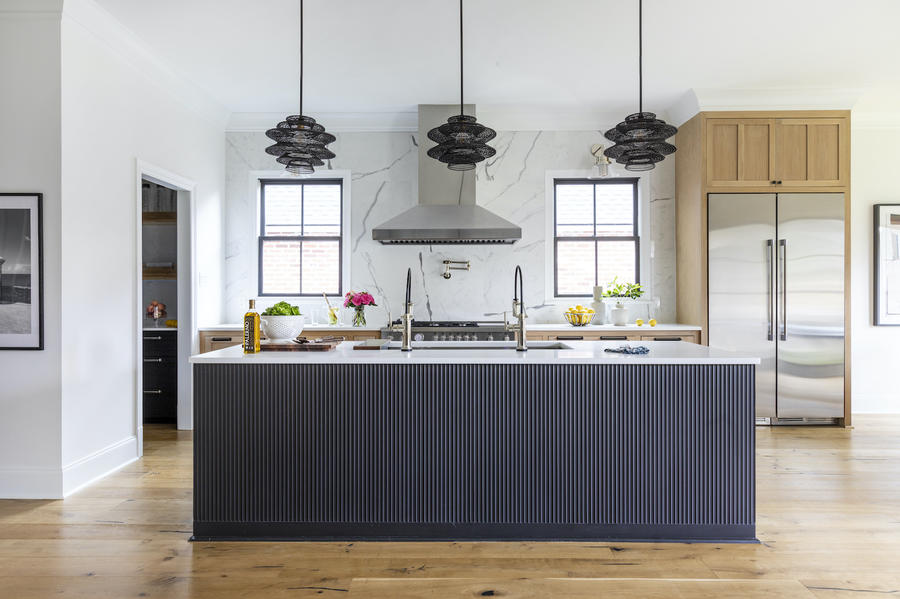
What does your team look like?
I’m the principal designer. The firm is still small enough that I have to be the project lead on a lot of things, but last year we expanded. We have an interior designer who was our junior designer and did all of our support from a design perspective, and then we had another design student who started as an intern, who we hired on a part-time basis; she was a design assistant, but was also our creative. She focused on the marketing, graphics and social media presence—all of those things that are really important to be consistent on. You have to have someone who has eyes on it the entire time. And then on the back office end, we have someone who does our bookkeeping. It’s a tiny but mighty operation, and we get the job done.
When did you found the firm, and how did you grow it over time?
My journey through design is very organic. My background is in communication: I have a bachelor’s and master’s in communications, and I worked in PR, crisis management and media relations for over 10 years. I thought that was what I was going to do with my life, until my husband’s job (he’s in oil and gas) moved us to Houston in 2008. That pause created a silence, just like this quarantine, but the pause allowed me to remember my passion for design and really be able to explore and lean into that.
My company came together because people were asking me to help with their home. I legit thought, You can’t do that? I just felt like I didn’t need to charge anyone for that, because it was common sense. But you hear enough of that and you’re like, OK, let’s formalize this. But I didn’t want to just go out and say, “Hey, now I do this thing.” I think one of my advantages is that I’m a very curious person. I said, “If I’m going to do this, I need to learn more. I need to ask a ton of questions. I need to get some certifications and technical training.” So that’s what I did, because if I wanted to hire somebody, I’d want to know that they could really do this.
I also think that curiosity is what allowed me to create really good content—because at the same time, I was also writing a blog, which actually grew bigger and better than my business did at first. I wasn’t writing as an expert—it was: “I was curious about this, here’s what I learned, and here’s what you can learn from that too.” My business grew in two parts—as a blogger and influencer, as well as a designer. There was this tension at one point, about four years ago, where I had grown my business so much that I didn’t have time to produce the content. It flip-flopped. But I still had a passion for creating content, so that’s when I started bringing on help.
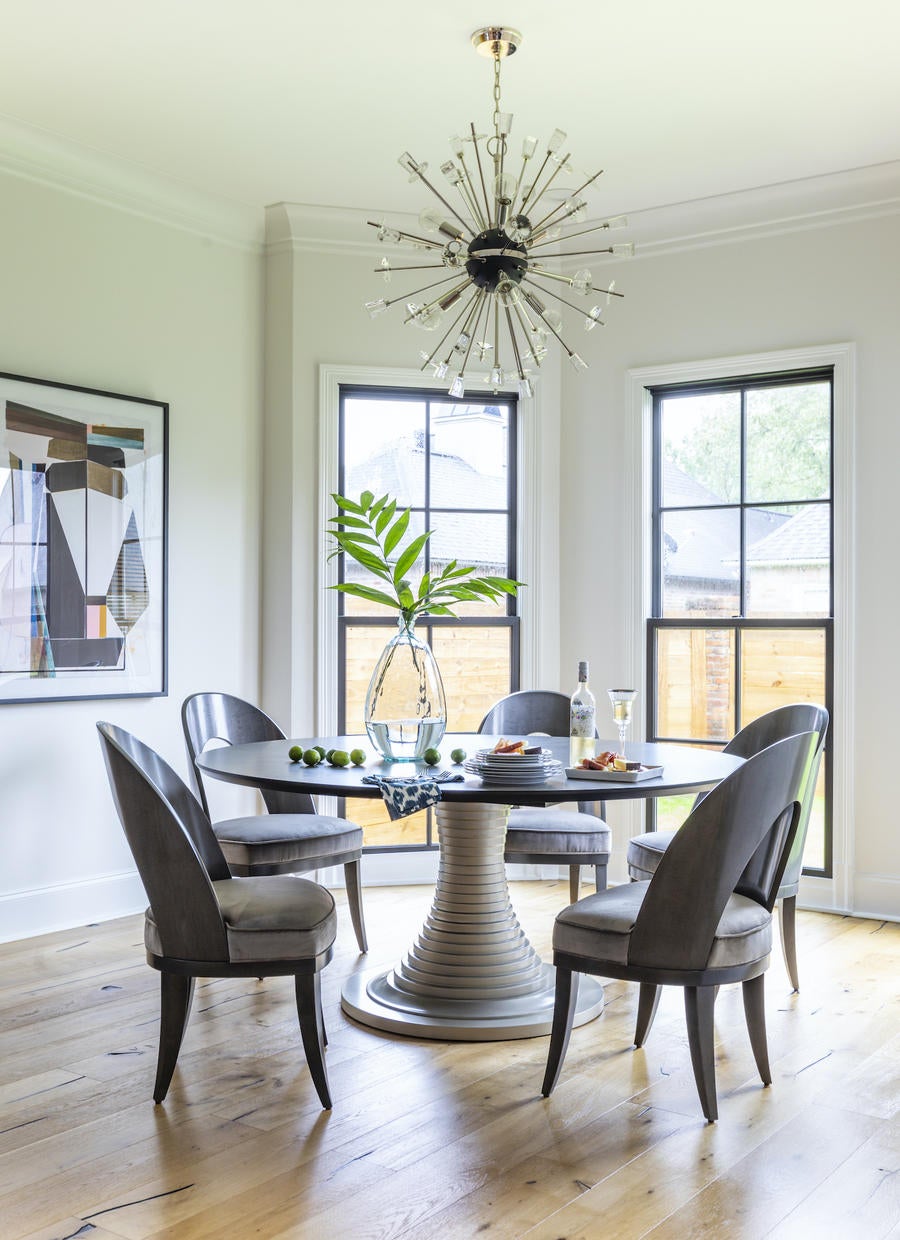
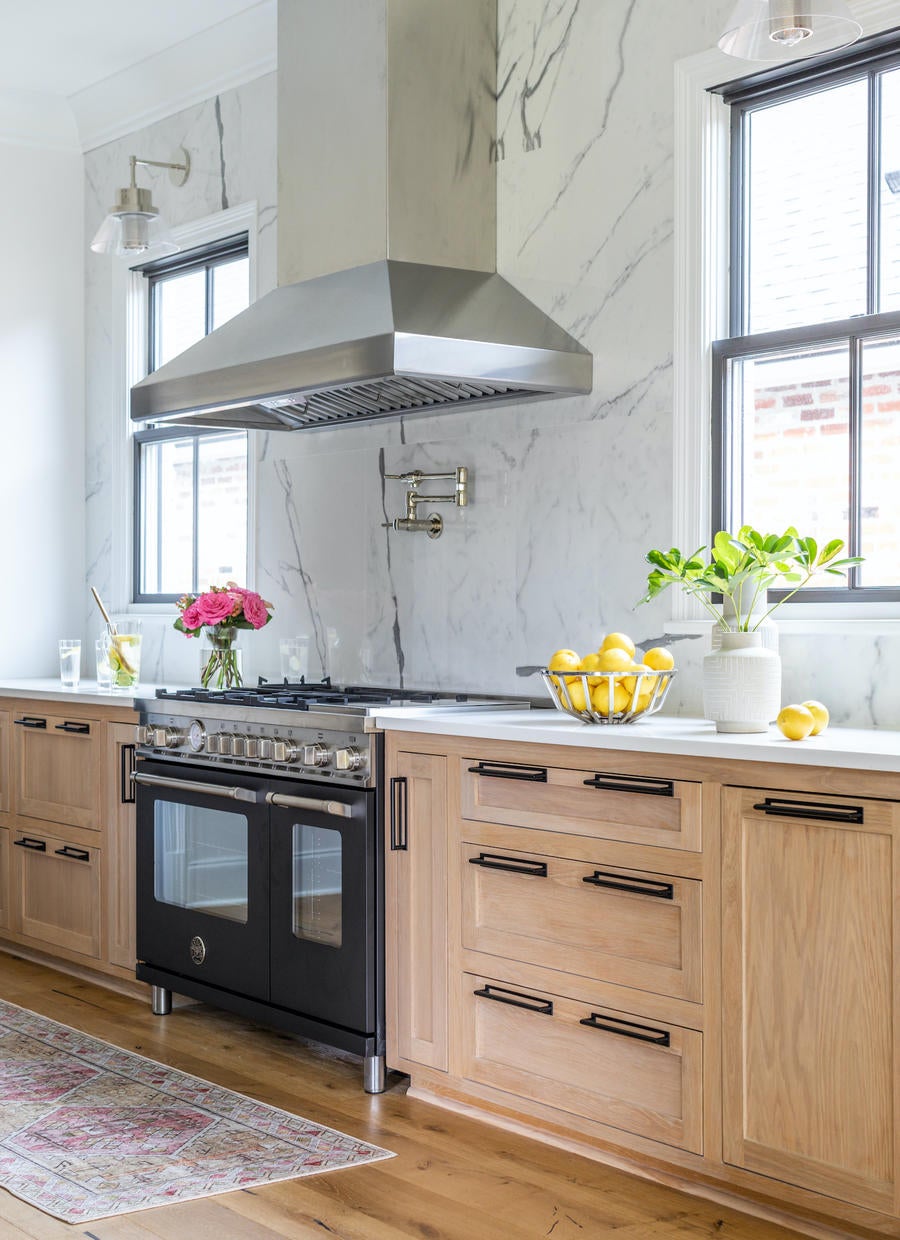
Who was your first hire?
I started with interns, and I loved that, because I love young people and mentoring. But there’s a lot of turnover. Just when I’d get them in and we’d work on something, they’d graduate or go get a job somewhere else. I did that for about two years, with a lot of interns coming in and out, and then I just couldn’t anymore—it takes too much time and energy. So the firm went back to just me.
Then I had two young ladies reach out to me and say, “Hey, are you hiring? Not for internships, but for jobs.” That started the process of me interviewing and eventually hiring my designer, and then the intern, who was hired with the intention of her coming on full-time. That worked really well. Our intern graduated and went to Dallas and now works for an architectural firm. But I actually almost had to kick her out, because she was like, “I got a job, but I love working for you.” I was like, “Girl, do they have benefits? Listen, you’ve got to go get that money.” To have people who don’t want to leave [means so much], but you have to let them grow.
Is the designer you hired the one who works remotely?
Yes, she lives in Lafayette. She’s able to work with me on a contract basis—she can take on projects in her neighborhood in her company name, and then we bring her in to run projects. It’s really helped ease the burden of [thinking], Oh, my gosh, I have this full-time staff I have to provide salaries and benefits for, even in the lulls that naturally come with this business. I would have been so much more stressed, but now she’s driving, I’m driving, and we’re able to work together, because we’ve learned how to make sure we’ve covered everything without missing a beat.
Your website reads, ‘Save time,’ ‘Save money,’ ‘Save your marriage,’ and I was really struck by how frank it is about the design process. Can you tell me about your approach to messaging?
If you tell people what to expect, it eliminates so much confusion, heartache and stress. My website is my sales team—I don’t have a dedicated person out there selling, but I do know there are people reading it at 2 a.m. when they can’t ask me a question, so it has to [provide enough] answers to make them want to schedule that call.
What I’ve realized is, I don’t want everybody. I want my website to attract my ideal client and repel those who aren’t. My website was written to speak to one person: my client. I know her questions. I know she’s worried about wasting money. They decide to build a house; the contractor is asking her questions; she’s running out of time; her husband is aggravated, and they’re arguing. My ideal client is married, and I spend a lot of time being a marriage counselor—listening to: “She said she wanted,” and “But you said you wanted,” and helping them meet in the middle. Every time someone calls me, they say, “I called you because your website says ‘Save your marriage,’ and I said, ‘This is my girl.’”
Those three things—saving time, money and your relationship—that is my promise to you. The other major service I offer is clarity. You’re not confident, because you’re not clear on the process. My website leads you from frustration to clarity. I don’t just say, “Here’s what we did, because we’re the bee’s knees.” I say, “Here’s what’s possible with clarity.” That’s how I position my projects. I’m purposeful and strategic with the words I use, because it has shown me not just who calls me, but that even in this quarantine, we are still bringing in new projects. It’s because people understand the true value of what I’m providing.
How far along into your business were you before you knew who that client was?
I’ve been in this game over 10 years, but it wasn’t until two or three years ago that I could say, “I don’t have to do every project for everybody.” I was coming off an experience where I’d seen the red flags and I took the project anyway, and it was a disaster emotionally for me and the client.
I do a debrief on every project, whether it’s good or bad, and I teach my team to do it too. We can’t just rest on the high. There is a high in the finish and we can celebrate, but then we have to go back through the process and tighten it. What were the opportunities to improve? How do you think the client felt about this? What could we have done better? We’re learning from each project.
The clarity of who my ideal client is came after finishing a project where I didn’t enjoy the process and didn’t help her in a way that mattered. It felt superficial. It was about: Can we get published? What is it going to do for my friends, for Instagram, and all that. And that’s really not why I do what I do. I want people who feel I’ve made a difference in their life. It was that project [contrasted with] others where I’ve loved every minute and cried tears of joy. Those are the clients that still call me, and you can tell they want an excuse to keep working with us. That’s how we want to leave every project—we want you to love us so much you want to find work for us.
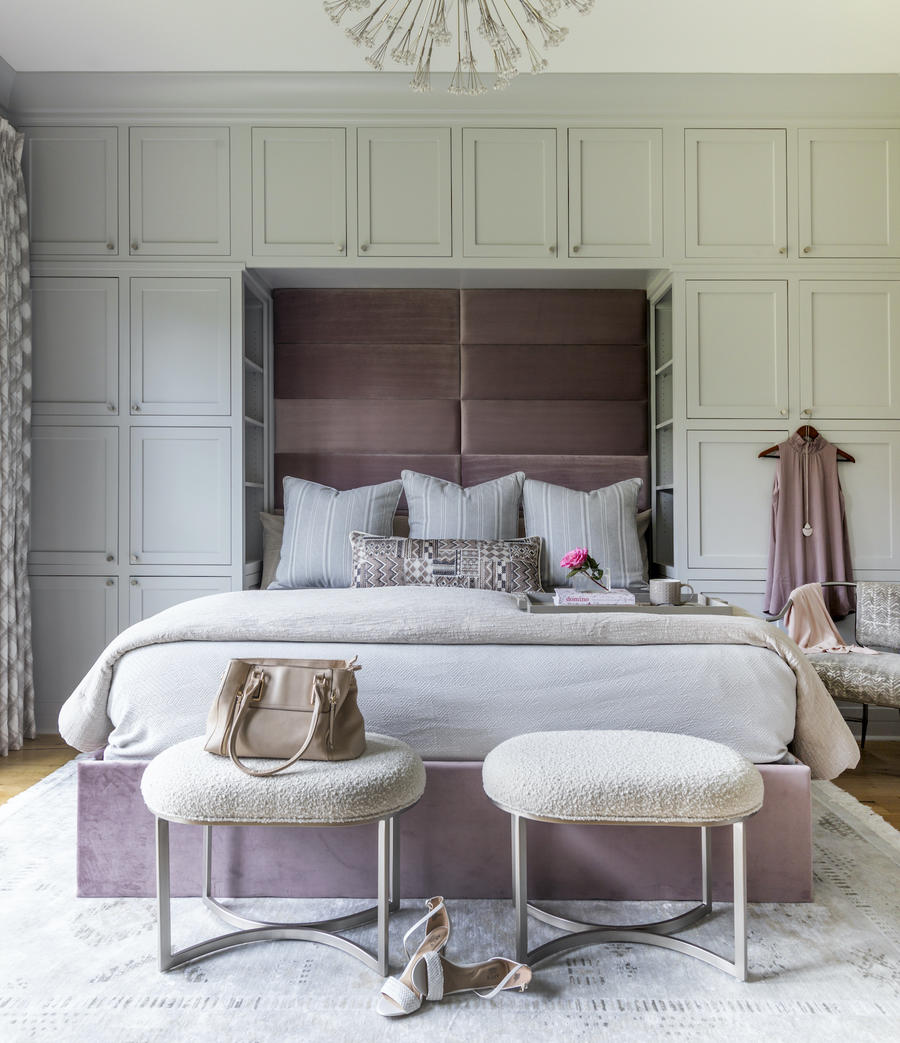
Tell me about your ideal client.
There’s a common thread among our clients: They’re all professional, usually married, have kids, have a similar personality type, and they’re experienced. They’ve tried it before, they don’t have time to do it themselves and they see how frustrating it is. I see exactly where they are and I’m able to talk to them about true value. Most designers talk about: “I can pick great colors for you, I can put together a beautiful room, I’ve been published.” Those are great things, but if it does not speak to the clients’ pain, now you’re competing with everyone else who says the same thing.
I’m there for the person who reads my website and says, “That is me. You’ve been reading my mail. Are you bugging my house? Are you Alexa?” That’s my person, and if I’m able to stay in that sweet spot, then I have no competition, because the next designer has her person, and the next designer has his person. That’s where all of our messaging comes from, and that is why I believe I’ve been able to have a sustained, successful business. And not successful as in gobs of money, but such that I’m able to work on projects that I love and have a sustainable business. It’s all I could ever hope for.
I love that. Tell me about working in Baton Rouge—about the design scene and the housing market.
Louisiana is all about food, family and fun. We love any good food, especially in the southern area of the state, around Lafayette, Baton Rouge and New Orleans. Family is huge, which is why we’re able to be so successful—people want to create spaces where they can entertain and gather. And for fun, we are sports. College sports, professional football, professional basketball, even Little League—any reason to get together and cheer, we are there with our dose of Southern love. Think about any city you’ve ever been to where you see people who love to gather, and Louisiana takes it a step further—we’ve never met a stranger, we always like to hug, we’ve got festivals every weekend for every little thing, from frogs to strawberries.
New Orleans and Lafayette, those are our two anchor cities. Lafayette is known for its rich culture—there’s the university there. New Orleans is almost like its own planet, there’s so much there. Baton Rouge is between them, and we enjoy that we can get to either one in 45 minutes. The city is growing, and we benefit from oil and gas on a good day, though that means this particular time has been very stressful on our community. We have a couple developers trying to corner the market, and they’re coming up with semi-custom homes (I like to tell people it’s not a custom home unless you can choose every little thing in the house with no restrictions)—and then you’ve got some doing spec homes and some doing one-off, truly custom homes, which is exciting because they’re able to be more creative.
Are you working mostly in new builds?
Our client is typically coming to us because they’ve bought two to three homes before and this is their first time building, and they thought it was going to be big fun—then got into it and realized it was very overwhelming and stressful. That’s what we typically pick up with our new construction, and we hold their hand through the process.
The other side of our business is renovations, where we’re going in and showing them the process. Those clients are typically in a neighborhood they love and this is their third or fourth house; they want to put down roots and love everything about the house except for a few things—so we’re usually doing either additions or bathroom and kitchen renovations.
Then in between are what I call my aspirational clients. They’ve watched me over the years on social media and say, “Oh, my gosh, I have a project that I’ve been saving for you.” They will hire us to do a decorating project—a dream for them, and an honor me—yes, we will absolutely come in and do your master bedroom, or whatever you want.
I feel like as a lot of designers grow their business, they start to say no to those projects. Why have you held on to those?
They’re important to me because I know that person coming in. They’ve learned a lot, because they’ve watched my videos and read my blog, so they come with a level of education that I wouldn’t otherwise have with someone who’s never worked with a designer. I want to hold that space for them, because I’m honored when they’re ready to step up and because they were the ones to tell the clients with big projects that they want to hire me, so I want that space to reward them and work with them.
In between big projects, we’ve got space where we’re waiting. Having those projects where it’s just decorating, it’s a shorter turnaround and it’s less energy—and that’s great for us, because it’s an opportunity to be creative and add value, and it’s where we get a lot of our content. You’ll see me post a lot of those projects on social media, because they’re always moving and they’re so quick, versus new construction projects, which are sometimes a year long.
The only thing I require of those [smaller] projects is that I’m very firm on my process. The people who come in and don’t necessarily know how the design process works—I don’t let them lead the process. And this is why: If they’re the right client, they defer to us and let us do our job.
Who is the person who can’t go along with that—or what are the things people want to do that wouldn’t fit into that process?
My website is very clear: Click here, do this. Here’s the service, do this. I try to answer as many questions there as I can, and if you still have questions, you can call me and I’ll walk you through it. But when I say the next step is to book your paid appointment—because I don’t come out for free—and you’re challenging me or saying, “Well, this person was free, so surely you’re not going to charge me.” No way.
Every procedure in our company is me coming up with the procedure and then going over it again and again until I’m sure I can pass the red-face test, where if you look me in the eye and challenge me on it, I am firm. If it is in writing, then by the time you see it, I am clear on it. You will never shake me, because I know the why behind it. So those clients who want to challenge every little move, it’s not going to work out. That’s why the consultation is paid—I’m still going to give you value. But also, we’re not getting married—this is a date. If I know you’re not for me and you know I’m not for you, we can leave this meeting with you feeling like you’ve gotten the value of the paid meeting, even if it ends with me saying, “You know who you might want to call?” Gently pointing you in that direction and making you feel like it’s your idea, that’s part of the value. I’m not going to hold you to this big project.
In every interaction with the client, you’re selling them the little yes. What you’re not doing is selling them the big yes—you don’t want to do that, because you don’t want to be committed to this person for the long haul. You want to sell them on the little yes—just the next step in your process that you both get value from—and keep moving them up the line that way.
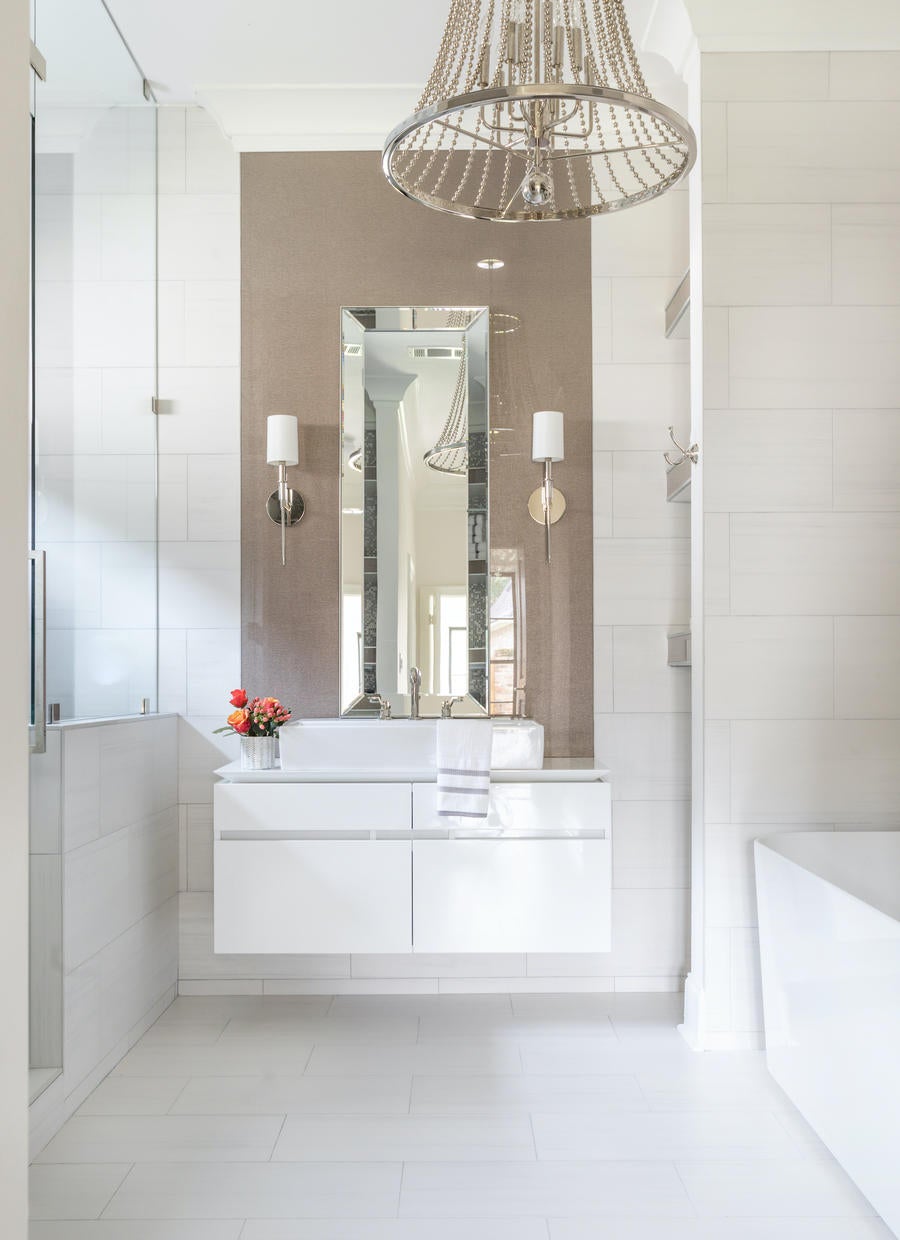
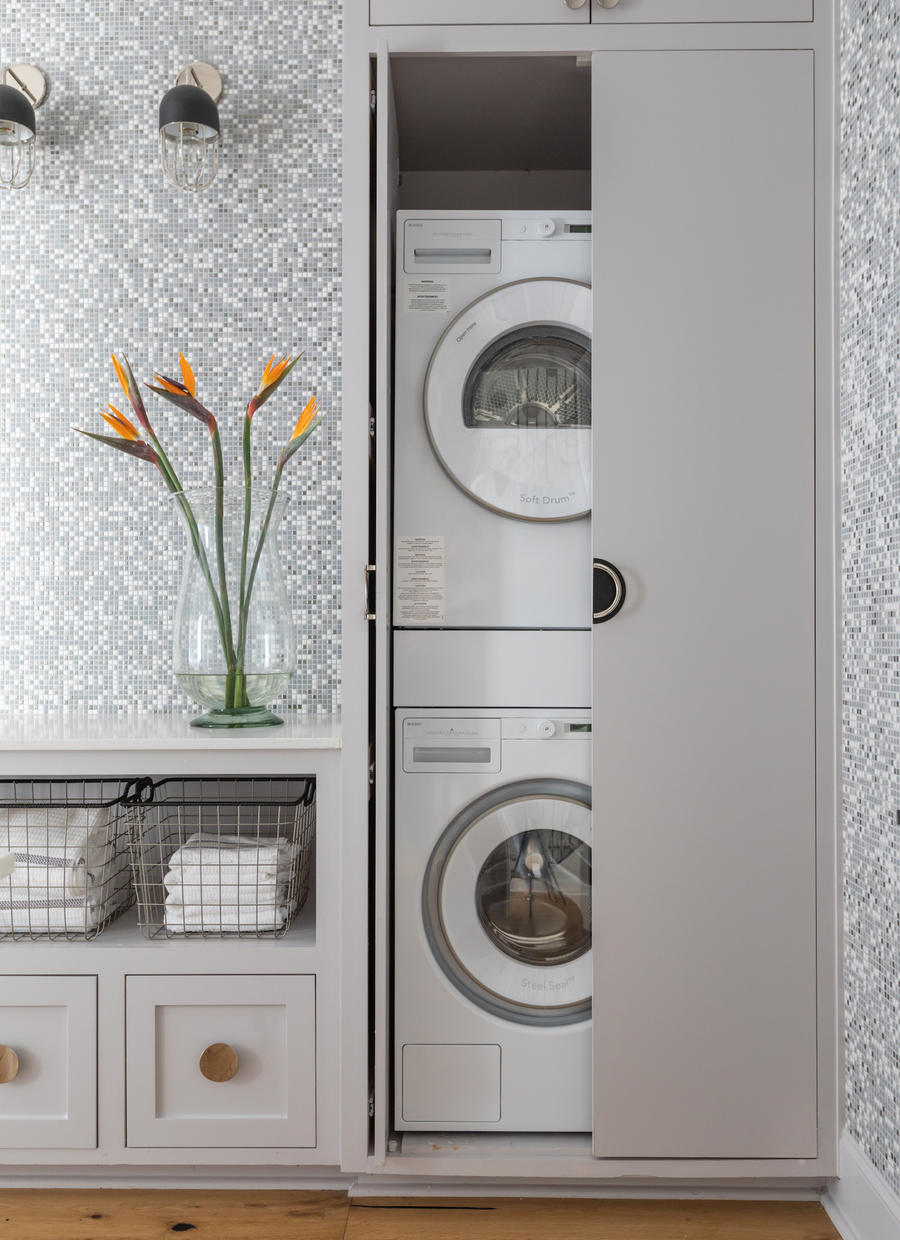
Where do you shop? What resources are your go-tos?
We don’t have a huge design center here. We have a couple of showrooms that offer design services, but they also allow designers to use them as a resource, which is very helpful. That’s why it’s always important for me to go to markets, so I go to High Point Market at least once a year; I’ve been to Vegas Market as well, and I go to KBIS every year because kitchen and bath is a big part of our business.
I’m also that person who takes the meeting with reps. Some designers are like, “Oh, don’t call me.” But I’m always taking a meeting. Please come show and tell me what you have, because I don’t have a place back home where I can drive in from the street and see things. My relationship with my reps has been invaluable. I’ll not only know what’s new, but I’ll be able to call and say, “Here’s what I’m working on—can you help me find this?”
We’ve also used buying groups where we don’t have a one-on-one relationship with that manufacturer. I have a small team, so if we hit a wall, we need to hand it off to someone else while we’re doing everything else to keep moving the project forward. I like to go to those resources when I need help sourcing beyond what I can find from my go-to sources. I’ll say, “Here’s what we’re looking for, here’s what we need, here’s the direction we’re going in—can you pull some options?” That’s been really helpful.
So they’ll do the curation and give you options?
If I show them an item we are considering, and they come back and say that’s not available, I will ask if they have other recommendations. Those are the resources that, when you need to think outside the box—they’re willing to do that if you let them. Most of us are so used to doing everything on our own, we don’t realize the level of service we could be receiving from some of our vendors.
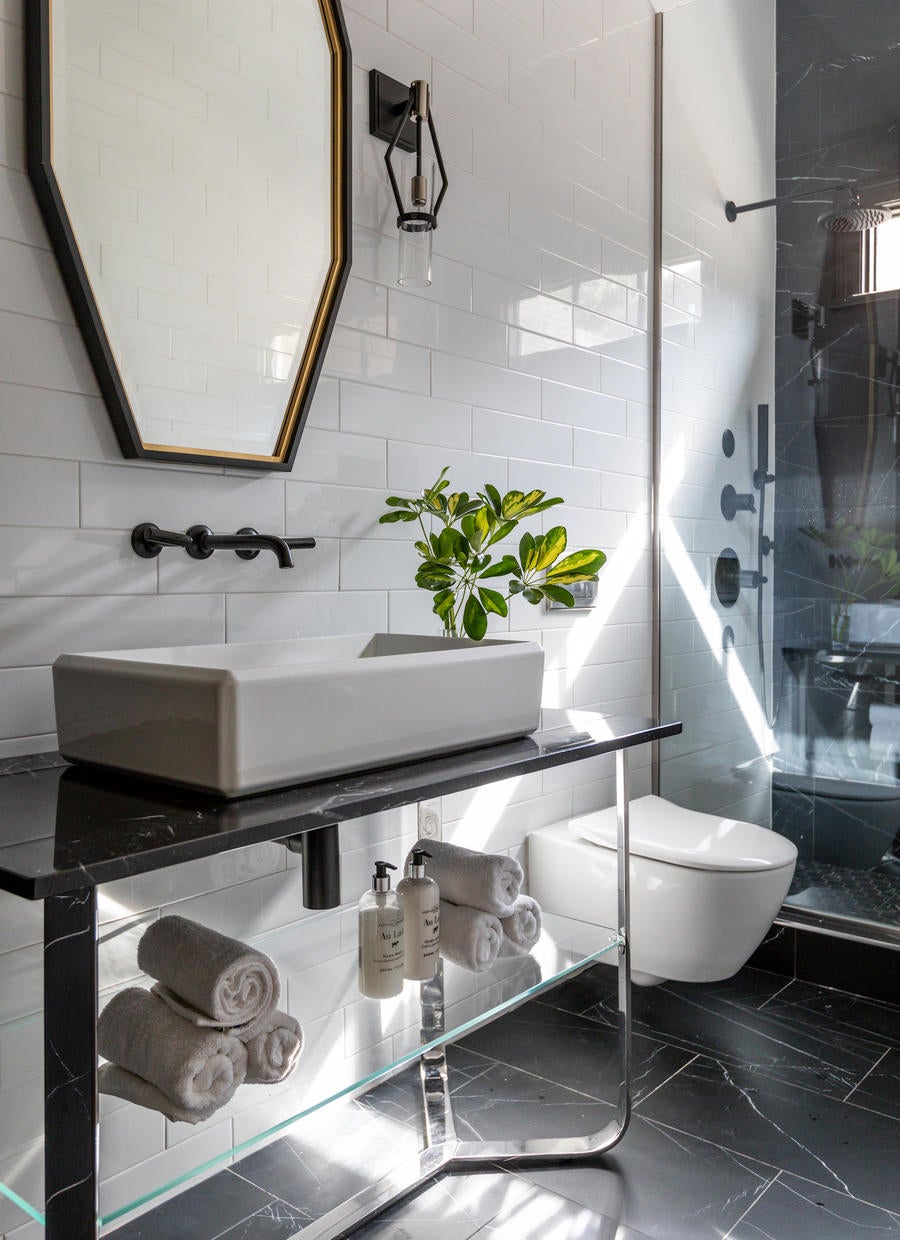
Where do you see opportunities to grow?
I see opportunity for growth in this period that we’ve had, watching how we work and getting smarter with where we put our time and resources. I see opportunity for growth in people who’ve been stuck in their homes for eight weeks now, being truly inspired to do something with them. We’ve gotten really good at our process and we know how to work outside of the pandemic—now we’ve got to figure out how to meet people where they are. Are we doing more virtual work? We’ve always done 3-D renderings and we’ve always used technology in our presentations; should we be sending a virtual chip, where they put on the glasses and we walk them through their space? That part is exciting to me, because I’m figuring out how to meet people where they are while still protecting a process that I know works.
How does the rendering fit in? So many people have told me it’s expensive.
I have an advantage because I’m able to do it myself. I was joking with Erika Ward, a designer friend of mine in Georgia, about our whole hustle and duct-tape strategy, and how we had to learn so much because we didn’t have a team. I know how to hand-draft; I know how to do CAD; I know how to render and produce video—I work the camera and I do the editing. Not everybody has that benefit, because they’ve had a different journey, but because I was doing it all myself, I learned how to do it all.
We’re giving the clients really nice 3-D images, almost like you’re in the room, which I use in the video for the presentation. I walk them through the room and show them the before and after. It’s really all about the presentation. After that, they buy in—like, swipe my card, take all my money, whatever you want to do, do it—because we were able to show it to them. You could always outsource that, and I’m not sure what it costs because I’ve had the benefit of being able to do it in-office.
It’s also helpful with clients in terms of clarity. This is what I tell the wife who says, “My husband doesn’t get it.” I say, “Get him to the presentation. When he sees it, he’ll get it.” The reason he’s resisting is because he’s not clear what you’re both getting for your money. The presentation is when every husband lights up. Suddenly it’s not just in their head and your head, it’s something we’re all looking at and the direction is clear.
You mentioned people who’ve been sitting in their homes during lockdown and are eager to make changes. Is that what’s motivating the clients you’ve onboarded in the last few weeks?
Yes, especially the two that we wrote proposals for this week. One of the things I’m realizing, and that our clients are realizing, is that up until seven or eight weeks ago, the home was passive. It was where you woke up and slept, but you spent a good part of your day outside those walls. You didn’t really have time for the pain points, because you weren’t there. Now that you’re there, you’re realizing how your life could function so much better.
What is the timeline on the two projects you presented this week?
The timeline is eight weeks, start to finish. They are heavily decorating, and not much construction or architectural changes—we’re doing things like paint, wallpaper, lighting and a few built-ins. It’s not any of the heavy lifting of a renovation, but they both happen to be the whole house.
I always tell clients that when we source decor and furniture, we think on a 10- to 12-week time frame. If we source locally for these projects, we can shorten that. If you are willing to pay retail, we can shorten that. I explain that you get more value for your money if you go wholesale—yes, there’s still my markup in that, but I can go to my vendor and get what’s right for the project that’s available. Both of these clients have asked to start with what’s here. If we can get most of the items locally, we will, and then we can wait on that lead time for the rest.
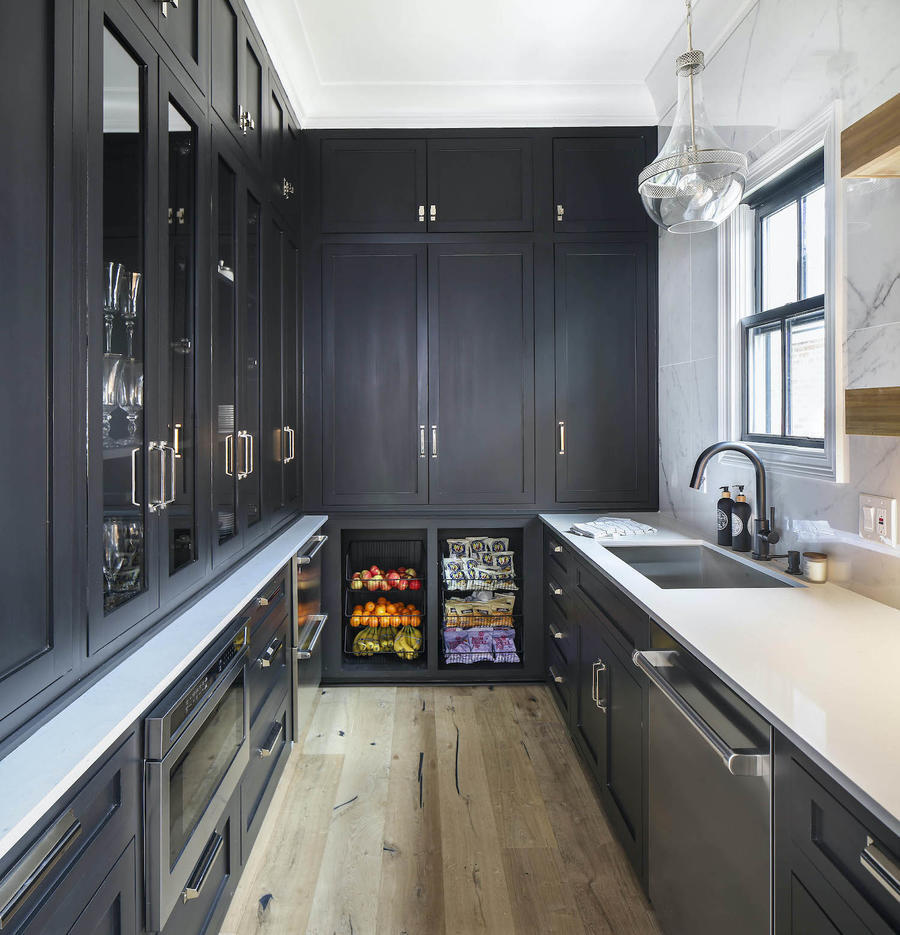
What has been your firm’s biggest challenge to date?
Up until two years ago, it was being in a very traditional market. In Louisiana, French Palladian–style and traditional homes are typically what you’d see. Then everybody fell in love with Chip and Joanna Gaines, so they felt like farmhouse modern is the way to go. And I didn’t see myself in any of that, but I kept getting the same projects. Your clients will trust you only to a certain point. I travel—that’s where I get my inspiration. I go to markets, to shows, and I’ve been blessed to go all over the world. The world is bigger than Louisiana. My challenge is designing to that [standard].
Two years ago, we bought a house and renovated it in a more contemporary aesthetic—my aesthetic. I did that not to say, “This is what I want to replicate in people’s homes.” I just wanted the freedom to show that something bigger and better was out there. That project has become our example to our clients. We walk them through the house, show them our favorite appliance distributor, show them the power of lighting. We use it as an experiential display of what’s possible.
This is your house, right?
Yes, we live in the house, but it’s also like a showhouse. We always allow our new clients, especially our new-construction clients, to come see it. When they’re new construction, it’s so hard to get it from a piece of paper—to extrapolate from that piece of paper you’re looking at in 2-D form to what’s going to happen in 3-D form. We’ve done things like have them stand in the kitchen and show us how they cook. Walk from the sink to the fridge—now you see why the triangle is so important. You want a 16-foot island, but let me show you that this is 9 feet and it’s perfectly sufficient. It’s really that hands-on visual that people need when they are building a house. Like, No, your great room does not need to be 25 feet long—it really doesn’t. I know that sounds like a good idea, but do you know how much furniture we’d have to put in? We’ll measure rooms and show them placement, and how you can get just as much value out of a space that’s 15 feet long.
You start to attract what you’re doing, and I just didn’t want to do another plain-Jane traditional house. I just couldn’t do it! Everybody wanted blue. My portfolio was starting to feel the same. For them, it was their first rodeo with a designer, but not for me. So that project was one of the best investments I could have made in time and money, because it allowed me to reframe the story and show them something new.
Where do you talk about budget in the process? I’m guessing that house plays a large piece in having that conversation.
Absolutely. We talk budget early. With our process, our client is required to give us their all-in budget for material selections. We have specific meetings, and [along the way] my job is to help them prioritize where their dollars go, while helping them achieve their goals. One of the mistakes people make is making decisions [without] realizing how it affects other things—but then when you get further down the line and you have to buy tile, you have no money left. All of your inspiration boards have mosaic waterjet tile that’s $100 per square foot, but we’re only able to get the Home Depot tile that’s $2 per square foot, because you don’t have any money left.
In our process, we start with the budget discussion and make sure you’re comfortable with all of the buckets, and then each meeting we are speaking to that scope and budget. Say the first meeting is plumbing—we do that early, because it’s part of the construction process, but people have no idea how much plumbing costs. No idea! If you have dreamed of Brizo faucets, we need to freeze that money. Choosing those faucets now is going to be one of the aesthetic selections that’s also highly functional, and we need to know that so we know how to design the cabinets.
We walk them through that process in a way that’s very logical, but that they didn’t know. They’re grateful, because when we leave a hardware meeting and their builder gave them a measly budget, we can take that and show them how to mix high and low pieces and still meet their budget. Even when they have a generous budget, if we’re able to give them what they need and save them money that they can apply to other areas, they’re very grateful. That’s our job, to keep a high-level view so that at the end of the day, the home they achieve is one that they can be proud of and that meets their goals and aspirations.
Did you always work that way? If not, when did you realize that was the right approach?
No, that came from trial and error. We had a project we worked on for two years with a client—for so long that we became fairly good friends. It was a truly custom home, so we worked with them from designing the floor plans through the material selections. But it took way too long to make selections, because we were not clear on the objective of each meeting. We also didn’t help them really get an understanding of budget. We’d say, “Do you have a certain number in mind, or is it more whatever it takes, whatever looks good?”
Well, you have a couple meetings like that and then the house budget balloons and then we don’t have a house, so we have to pump the breaks. That process took so long because we didn’t add the value we should have in keeping them on track. Letting them bring in new ideas six meetings in—we don’t do that anymore. We’ve learned what works, we’ve tested and refined it, and now what you see on my website is the way that works. This is how we’re able to be so confident in what we deliver—we’ve seen it succeed. There’s no guesswork.
To learn more about Arianne Bellizaire, visit her website or find her on Instagram.















